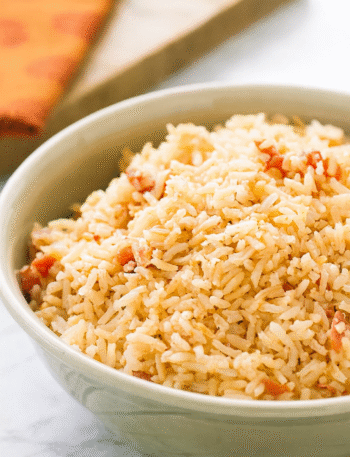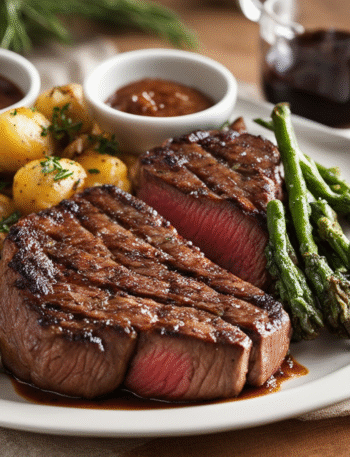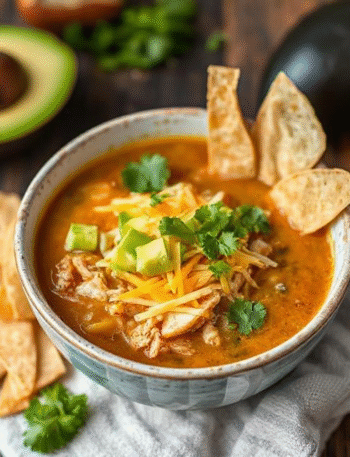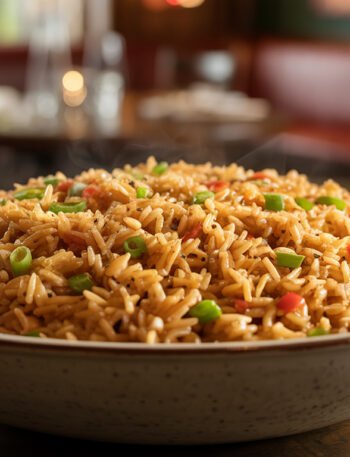[addtoany]
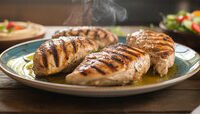
There’s something magical about dishes that taste complex but come together effortlessly in your kitchen. This Cava grilled chicken recipe delivers exactly that experience – tender, juicy chicken infused with bold Mediterranean flavors that will make you forget about takeout forever.
What makes this Cava grilled chicken so special is its perfect balance of smoky harissa heat, bright citrus notes, and aromatic spices that create layers of flavor in every single bite. The result is restaurant-quality chicken that’s surprisingly simple to prepare at home.
Why This Cava Grilled Chicken Recipe Works
This Cava grilled chicken recipe succeeds because it captures the essence of Mediterranean cooking – using high-quality, simple ingredients that complement rather than compete with each other. The secret lies in understanding how to make cava chicken with the right combination of spices and technique.
The marinade creates a flavor profile that’s both familiar and exciting. Harissa paste provides smoky heat, while honey adds subtle sweetness that caramelizes beautifully during grilling. Lemon juice brightens everything up, and the blend of Mediterranean spices creates depth that develops as the chicken cooks.
Unlike many grilled chicken recipes that can turn out dry or bland, this method ensures your Cava grilled chicken stays incredibly moist and flavorful. The cava chicken seasoning penetrates deep into the meat, creating a consistent taste throughout.
The key difference between this recipe and ordinary grilled chicken lies in the careful balance of ingredients. Each component of the cava chicken seasoning serves a specific purpose – from tenderizing the meat to building complex flavor layers that develop during the cooking process.
Understanding Cava’s Chicken Selection
When learning how to make cava chicken, understanding the protein choice is crucial. Cava restaurants typically use boneless, skinless chicken thighs rather than breasts, and there’s a good reason for this decision.
Chicken thighs contain more natural fat and connective tissue, which translates to superior flavor and moisture retention during high-heat cooking. This makes them nearly foolproof for grilling – they stay juicy even if you cook them a minute or two longer than perfect.
The darker meat of thighs also absorbs marinades more effectively than white meat. Your cava chicken seasoning will penetrate deeper, creating more complex flavors throughout the meat rather than just on the surface.
However, chicken breasts work perfectly fine if you prefer leaner meat. Just monitor them more closely during cooking and consider pounding them to even thickness for consistent results. The key is choosing quality poultry – organic or free-range chicken will always deliver superior taste and texture.
When selecting chicken thighs, look for pieces that are similar in size to ensure even cooking. Remove any excess fat or skin if present, as this can cause flare-ups on the grill and prevent the cava chicken seasoning from adhering properly.
Essential Ingredients for Authentic Flavor
Creating authentic Cava grilled chicken requires specific ingredients that work in harmony to build the signature flavor profile. Each component plays a vital role in this cava chicken seasoning blend.
Primary Ingredients:
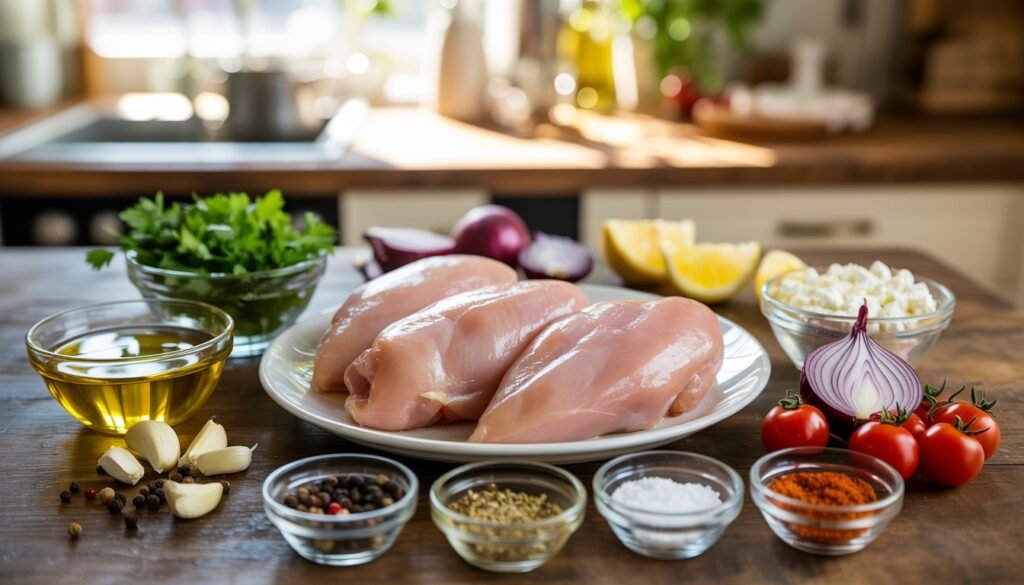
- 1 pound boneless, skinless chicken thighs (4-6 pieces): The foundation of your dish
- 2 tablespoons harissa paste: The flavor cornerstone providing smoky, spicy complexity
- 2 tablespoons extra virgin olive oil: Moisture and flavor carrier
- 1 tablespoon fresh lemon juice: Brightness and natural tenderizing
- 1 tablespoon honey: Balancing sweetness and caramelization
- 1 garlic clove, minced: Savory depth and aromatics
Supporting Spice Blend:
- 1 teaspoon paprika: Adds color and mild smokiness
- 1 teaspoon ground cumin: Earthy, warm undertones
- 1 teaspoon kosher salt: Flavor enhancement and seasoning
- 1 teaspoon freshly ground black pepper: Subtle heat and complexity
Smart Ingredient Substitutions:
When harissa paste isn’t available, create a substitute using 1 tablespoon tomato paste, 1 teaspoon chili powder, and 1/2 teaspoon smoked paprika. For honey alternatives, try maple syrup or brown sugar. Apple cider vinegar can replace lemon juice for a different tangy profile.
The quality of your ingredients directly impacts the final result. Extra virgin olive oil provides richness and helps carry the fat-soluble flavors throughout the chicken. Fresh lemon juice is essential – bottled juice lacks the bright, acidic punch needed to balance the rich harissa flavors.
Harissa paste is the star ingredient that gives this Cava grilled chicken its distinctive character. This North African condiment combines roasted red peppers, chilies, garlic, and warm spices like coriander and caraway. Different brands vary in heat level, so adjust quantities based on your spice tolerance.
Complete Step-by-Step Instructions
This detailed Cava grilled chicken recipe breaks down exactly how to make cava chicken with consistent, professional results:
Preparation Phase (10 minutes):
Step 1 – Prepare the Protein: Place 1 pound of chicken thighs in a medium mixing bowl. If using breasts, pound to an even 3/4-inch thickness for uniform cooking. Pat the chicken dry with paper towels to help the marinade adhere better.
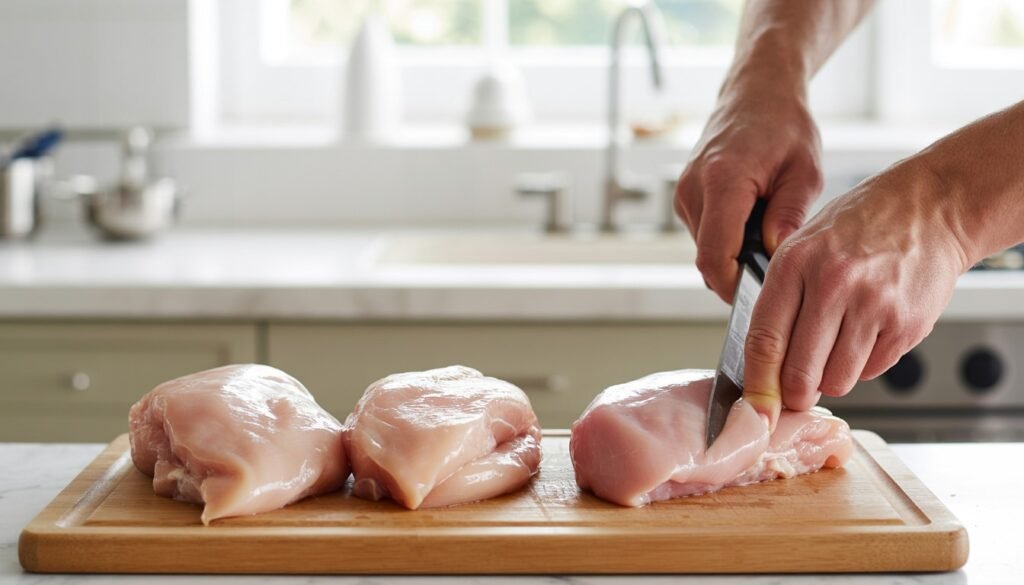
Step 2 – Build the Marinade: Add harissa paste, olive oil, lemon juice, and honey directly to the bowl with the chicken. Mince the garlic finely using a knife or garlic press, then add it along with paprika, cumin, salt, and black pepper.
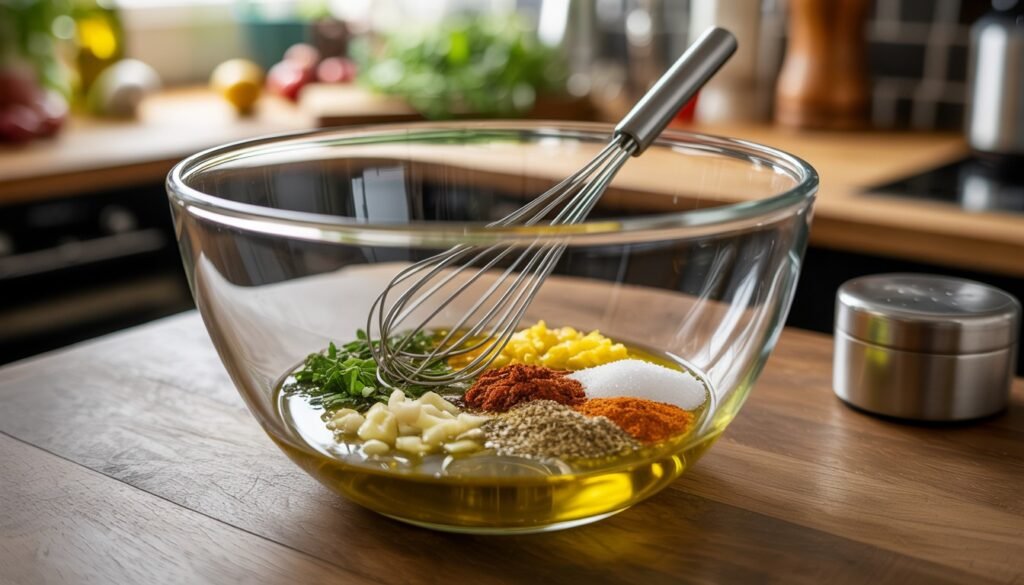
Step 3 – Combine Thoroughly: Using clean hands or a large spoon, mix everything until each piece of chicken is completely coated with the cava chicken seasoning mixture. The vibrant red-orange color should cover all surfaces evenly. Work the marinade into any crevices or folds in the meat.
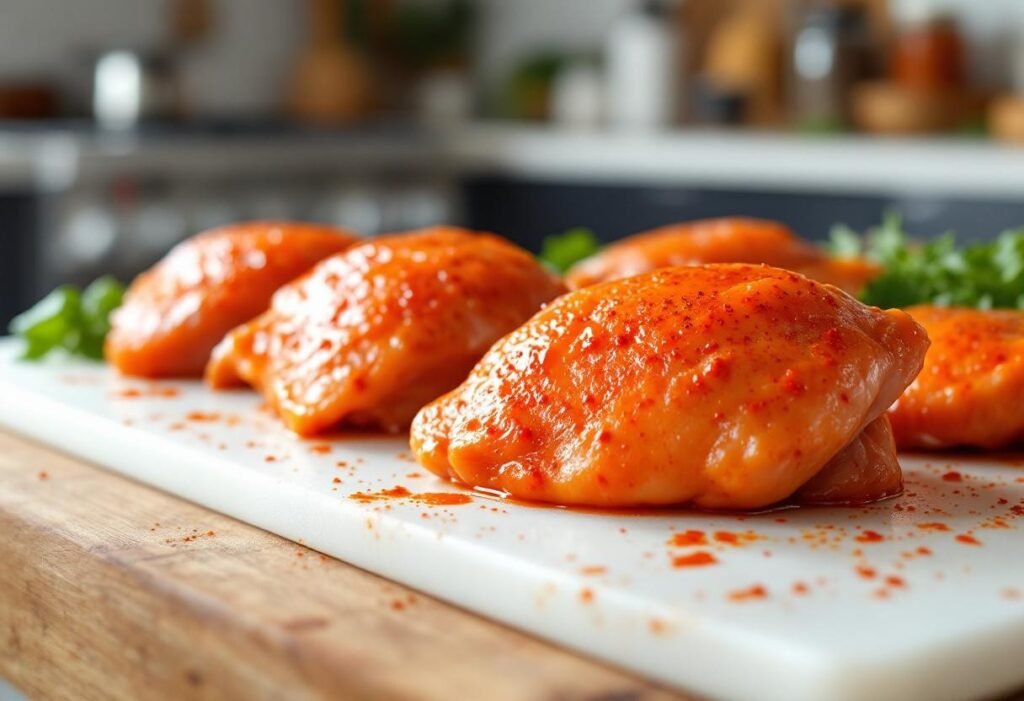
Marinating Phase (30 minutes to 4 hours):
Step 4 – Marinate for Flavor: Cover the bowl tightly with plastic wrap or transfer to a zip-lock bag. Refrigerate for minimum 30 minutes, though 2-4 hours develops deeper flavor penetration. For food safety, never marinate at room temperature.
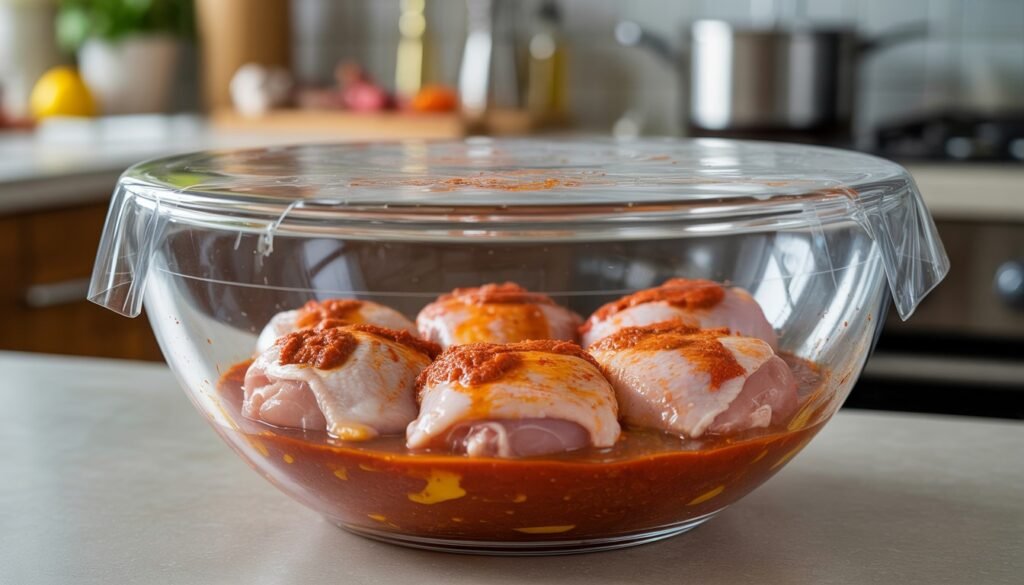
The marinating process is crucial for flavor development. The acids in the lemon juice help break down proteins, making the chicken more tender, while the oil carries the spices deep into the meat. Longer marinating times result in more pronounced flavors, but avoid marinating longer than 8 hours as the acids can make the texture mushy.
Cooking Phase (15 minutes):
Step 5 – Prepare the Grill: Heat your grill or grill pan to medium-high heat (375-400°F). Clean grates thoroughly with a grill brush and brush with oil to prevent sticking. Remove chicken from refrigerator 15 minutes before cooking to bring to room temperature.
Step 6 – Grill to Perfection: Remove chicken from refrigerator and place on hot grill. Cook 5-7 minutes per side without moving until beautiful grill marks form. The chicken should release naturally from the grates when ready to flip. Internal temperature should reach 165°F.
Step 7 – Rest Before Serving: Transfer Cava grilled chicken to a clean plate and rest 5 minutes. This crucial step allows juices to redistribute for maximum tenderness. Cover loosely with foil to keep warm if desired.
Final Touches:
Step 8 – Slice and Present: Slice the rested chicken against the grain into strips or serve whole pieces. Garnish with fresh herbs like parsley or cilantro and serve immediately with your chosen sides.
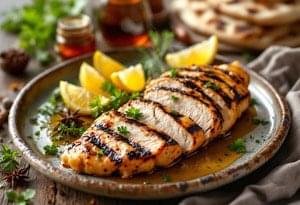
Professional Grilling Techniques
Mastering these techniques ensures your Cava grilled chicken turns out perfectly every time you make it:
Heat Management:
Create a two-zone fire with medium-high heat for searing and medium heat for finishing. This prevents the cava chicken seasoning from burning while ensuring thorough cooking. On a gas grill, light only half the burners. On charcoal, push coals to one side.
The Non-Stick Method:
Properly preheated, clean, and oiled grates are essential. Your chicken should release naturally when it’s ready to flip – forcing it will tear the meat and remove the flavorful crust. If chicken sticks, it needs more time on that side.
Temperature Monitoring:
Use an instant-read thermometer inserted into the thickest part of the thigh. The FDA recommends 165°F for food safety, but chicken thighs remain juicy even slightly beyond this temperature. Dark meat is more forgiving than white meat when it comes to overcooking.
Caramelization Secrets:
The honey in your marinade will caramelize during cooking, creating beautiful color and concentrated flavor. If it’s browning too quickly, move chicken to a cooler part of the grill to finish cooking. This prevents burnt exterior while ensuring proper internal temperature.
Managing Flare-ups:
The oil and honey in the marinade can cause flare-ups. Keep a spray bottle of water nearby and move chicken to a cooler area if flames get too high. Never use the spray bottle directly on flames – move the food first, then spray the flames.
Testing for Doneness:
Beyond using a thermometer, properly cooked chicken thighs will feel firm to the touch and juices will run clear when pierced. The meat should easily pull apart when tested with a fork.
Perfect Serving Combinations
Your Cava grilled chicken shines in numerous serving styles that highlight Mediterranean flavors:
Classic Mediterranean Bowl:
Build layers starting with fluffy basmati rice or quinoa, top with sliced Cava grilled chicken, add cucumber tomato salad, dollops of hummus and tzatziki, pickled red onions, and fresh herbs. This combination provides textural contrast and balances the rich, spiced chicken.
Healthy Grain Bowls:
Combine your chicken with bulgur wheat, roasted vegetables like eggplant and zucchini, fresh herbs, crumbled feta cheese, and a drizzle of tahini dressing for a nutritious, satisfying meal. The nutty grains complement the complex spice profile.
Mediterranean Wraps:
Warm pita bread filled with Cava grilled chicken, crisp vegetables, creamy yogurt sauce, and a sprinkle of sumac creates perfect handheld meals. Add some pickled turnips or cucumbers for extra crunch and acidity.
Family-Style Platters:
Serve whole pieces of Cava grilled chicken alongside Mediterranean rice pilaf, grilled vegetables, warm flatbread, and an array of dips and sauces. This approach works well for entertaining and lets everyone customize their plate.
Sauce Pairings That Shine:
- Classic Hummus: Creamy, nutty chickpea spread that provides cooling contrast
- Cooling Tzatziki: Yogurt-cucumber sauce that balances the harissa heat perfectly
- Garlic Sauce: Bold, creamy complement to the spiced chicken
- Harissa Mayo: Double down on harissa flavors with creamy texture
- Mint Yogurt: Fresh, cooling contrast to warm spices
- Tahini Dressing: Nutty, rich sauce that complements Mediterranean flavors
Side Dish Recommendations:
Pair your Cava grilled chicken with Mediterranean staples like tabouleh, fattoush salad, roasted cauliflower with tahini, or warm pita bread. These sides provide textural variety and help balance the rich, spiced chicken.
Storage and Meal Planning
This Cava grilled chicken recipe is ideal for meal preparation and busy weeknight dinners:
Refrigerator Storage:
Store cooled Cava grilled chicken in airtight containers for 3-4 days. Slice before storing for quick meal assembly throughout the week. Keep chicken separate from wet ingredients like tomatoes to prevent sogginess.
Freezer Guidelines:
Wrap individual portions in plastic wrap, then place in freezer bags with air removed. Properly stored Cava grilled chicken maintains quality for up to 2 months frozen. Label with date and contents for easy identification.
Reheating Methods:
- Stovetop: Warm gently in a skillet with a splash of olive oil (5 minutes)
- Oven: Reheat at 350°F for 8-10 minutes until warmed through
- Microwave: Use 50% power with damp paper towel covering (1-2 minutes)
Advanced Meal Prep:
Marinate chicken the night before cooking for deeper flavor development. Prepare large batches on weekends, then create different meals throughout the week by varying sides and sauces. This approach maximizes your time investment while providing variety.
Make-Ahead Strategies:
The marinade can be prepared up to 3 days in advance and stored in the refrigerator. You can also marinate the chicken up to 24 hours ahead of cooking. Pre-cut vegetables and prepare grain sides to create complete meals quickly during busy weekdays.
Portion Control:
A typical serving is 4-5 ounces of cooked chicken per person. When meal prepping, portion this amount with appropriate sides for balanced, satisfying meals. This recipe easily doubles or triples for larger batch cooking.
Expert Tips and Troubleshooting
These professional insights ensure your Cava grilled chicken succeeds every time:
Preventing Common Issues:
Dry chicken: Use thighs instead of breasts, don’t skip the resting period, and avoid overcooking past 165°F internal temperature. The natural fat in thighs provides insurance against dryness.
Burnt exterior: Lower heat if the cava chicken seasoning is browning too quickly before the interior cooks through. Move to indirect heat to finish cooking if needed.
Uneven cooking: Pound chicken to uniform thickness and let it come to room temperature before grilling. This ensures even heat penetration throughout the meat.
Sticking to grates: Ensure grates are properly preheated and oiled. Please don’t attempt to flip the chicken until it releases naturally from the surface.
Flavor Enhancement Tips:
Add a final squeeze of fresh lemon juice just before serving to brighten all the Mediterranean flavors. A light sprinkle of fresh herbs like parsley or cilantro adds color and freshness that complements the rich, cooked flavors.
For extra depth, consider adding a pinch of cinnamon or allspice to your cava chicken seasoning blend. These warm spices are traditional in North African cooking and enhance the harissa flavors.
Alternative Cooking Methods:
Oven baking: Bake at 400°F for 20-25 minutes, flipping halfway through. Use a rimmed baking sheet lined with parchment paper for easy cleanup.
Pan searing: Cook in a hot skillet with oil, 6-7 minutes per side. This method works well for smaller batches or when outdoor grilling isn’t possible.
Indoor grill pan: Use medium-high heat and follow the same timing as outdoor grilling. Ensure good ventilation, as the spices can create aromatic smoke.
Adjusting Heat Levels:
If your harissa paste is too spicy, reduce the quantity and add extra honey to balance. For more heat, add a pinch of cayenne pepper or use a spicier harissa brand. Taste the marinade before adding chicken to adjust seasoning as needed.
Scaling the Recipe:
This recipe easily scales up or down. Maintain the same ratios of marinade ingredients to chicken weight. For larger batches, ensure you have adequate grill space or cook in batches to avoid overcrowding.
Conclusion
This Cava grilled chicken recipe transforms simple ingredients into an extraordinary meal that rivals your favorite Mediterranean restaurant. The combination of bold cava chicken seasoning, proper technique, and quality ingredients creates chicken that’s juicy, flavorful, and absolutely satisfying. Master how to make cava chicken with this foolproof method, and you’ll have a go-to recipe that impresses every time. Whether you’re meal prepping for the week or hosting a dinner party, this Cava grilled chicken delivers restaurant-quality results in your own kitchen.


